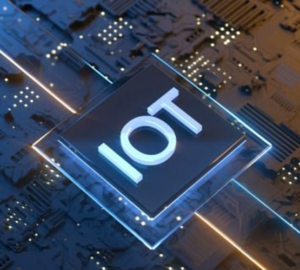
AI and Automation
These cutting-edge technologies are poised to transform how we protect assets, manage access, and ensure the safety of individuals and our entire organizations. AI-driven predictive analytics will play a pivotal role in identifying potential security threats. When fed with data from surveillance cameras, access control systems, and Internet of Things (IoT) sensors, machine learning algorithms can anticipate security breaches, abnormal activities, or potential safety hazards. This predictive power allows security teams to act proactively and mitigate risks before they escalate.
Automation in access control systems simplifies operations and enhances security. Facial recognition, fingerprint scans, and behavioral biometrics rapidly replace traditional access cards and PINs. This boosts security and makes access control more convenient for system users.

Advanced New Smart Asset Tracking
Tracking valuable assets is also critical to organizational security, especially in healthcare, shipping and logistics, and manufacturing sectors. AI, especially powered by IoT networks, is being harnessed to automate asset tracking, making it easier to locate, monitor, and secure valuable equipment or inventory.
Both AI and automation are making physical security more scalable and cost-effective. In 2024, small to medium businesses and organizations will be able to harness the power of AI-driven security, benefiting from advanced threat detection and access control—technologies previously only affordable with an enterprise-scale budget.

Biometric and Access Control Innovation
Biometric security is no longer restricted to fingerprints or facial recognition alone. Multimodal biometrics are emerging as the new standard. This approach combines various biometric identifiers like fingerprints, facial features, retinal scans, voice recognition, and behavioral biometrics to provide access control. Such combinations enhance accuracy and security, making it significantly more challenging for bad actors to breach your security perimeters and reach your assets.
Sustainability and Environmental Security
The domain of physical security in business continues to grow. Beyond traditional measures aimed at protecting assets and individuals, organizations increasingly recognize the need to safeguard their operations against environmental risks and contribute to a more sustainable future. We expect a few key trends to grow in importance over 2024.
Environmental monitoring
Integrating environmental sensors in physical security systems will become the new norm. These sensors detect and provide real-time data on environmental parameters, such as air quality, temperature, humidity, and seismic activity. This information is essential for ensuring the safety and well-being of personnel and assets.
Emergency preparedness for environmental risks
Organizations are enhancing their emergency preparedness plans to address environmental risks. This includes evacuation strategies for natural disasters and detailed response plans for various environmental contingencies.
Robust Physical Intrusion Detection (PID)
Security as a discipline is full of unsung heroes. Heroic people, ideas, and technologies go unnoticed but do considerable heavy lifting in keeping our world safe. PID systems are poised to be the new unsung heroes that protect physical spaces, assets, and people from unauthorized access or malicious activities in 2024.
Integrating physical intrusion detection with other security measures, such as video surveillance and access control, will become more seamless. This convergence allows for an even more holistic approach to security, enhancing threat detection and response capabilities.
Wireless and IoT integration
The wireless revolution has extended to intrusion detection systems. These systems can now be integrated with the IoT for improved communication, remote monitoring, and real-time alerts, enhancing the flexibility and reach of security solutions. Mobile technology allows security personnel to monitor intrusion detection systems on the go. They will be able to receive alerts, view video feeds, and respond to threats from their smartphones or tablets, enhancing response times and efficiency.
Security systems can analyse intrusion data to provide insights into intrusion patterns and vulnerabilities. This data-driven approach helps organizations make informed decisions about security improvements and threat prevention.


